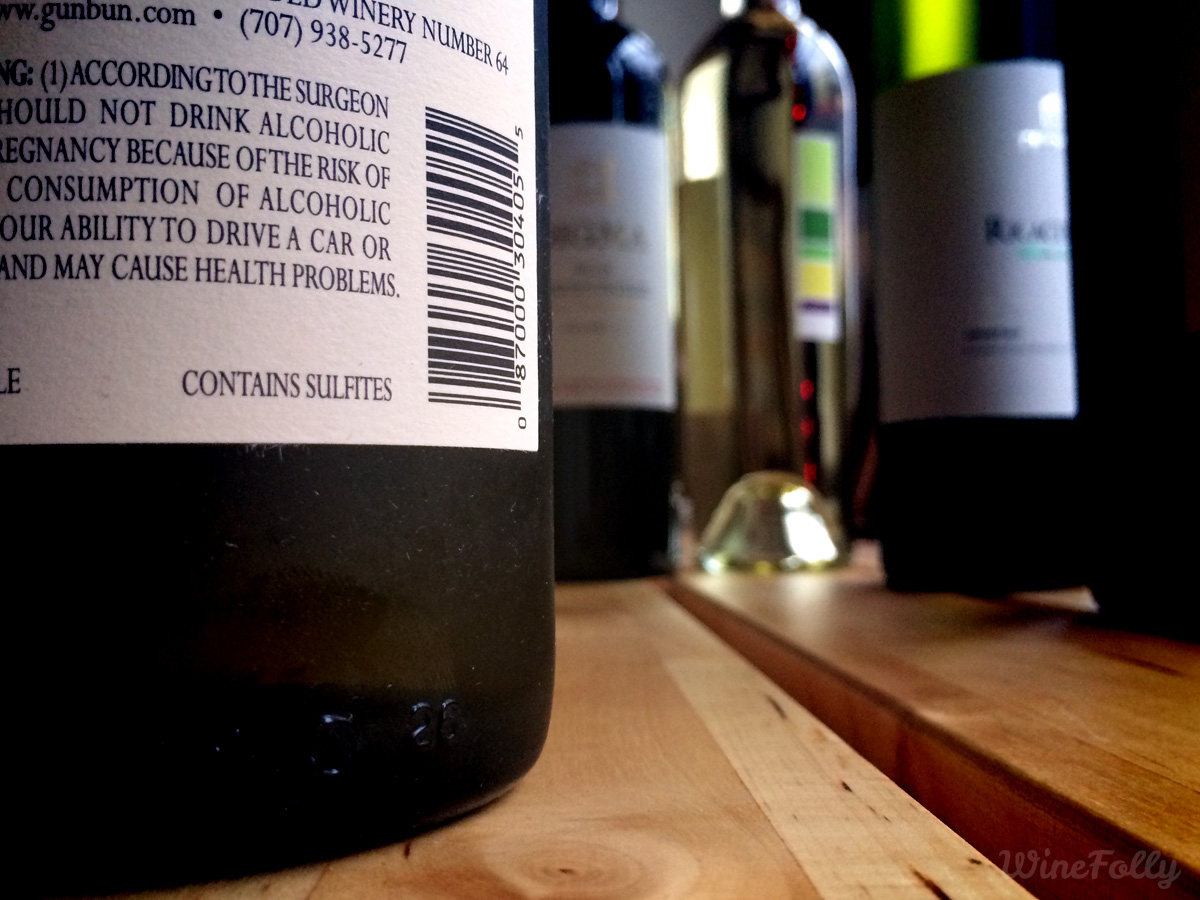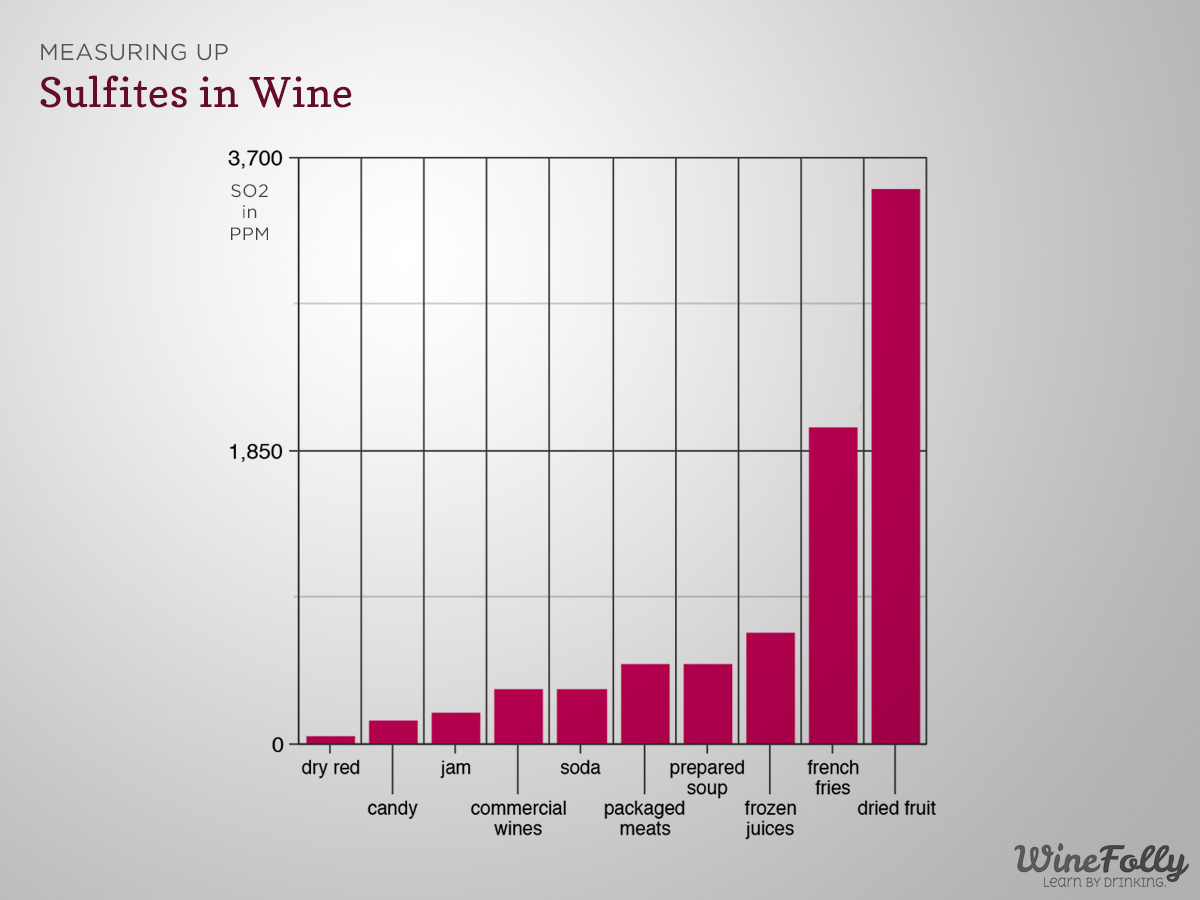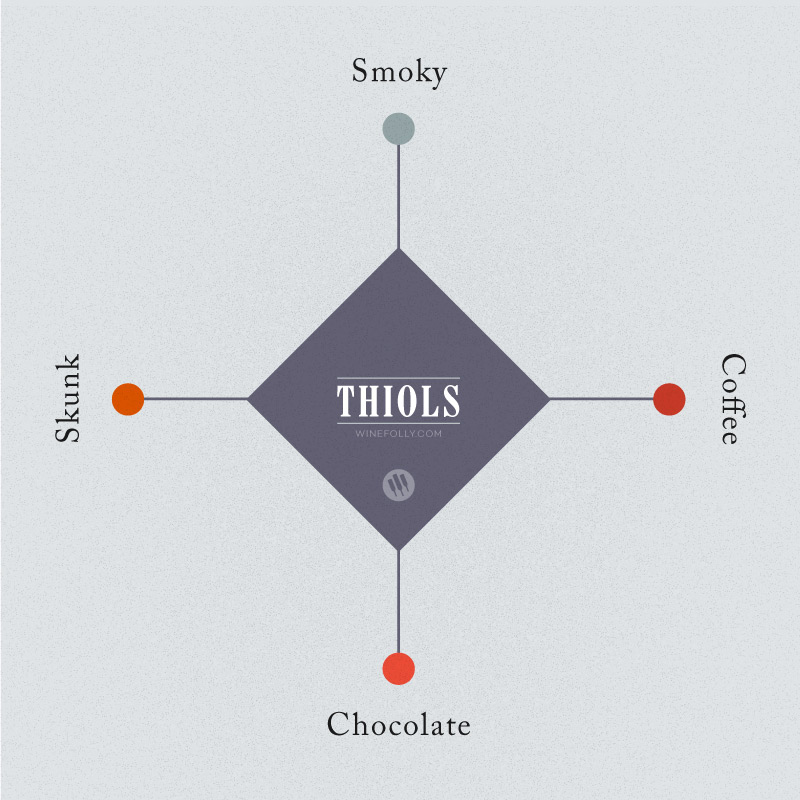Those little words “Contains Sulfites” on the bottom of a label often stir up concern. What are sulfites in wine? And, are they bad for me?

The Deal with Sulfites in Wine
The United States is one of the only countries (along with Australia) that require bottles to label sulfite contents. So what gives? How much is there, and how do they affect you? Let’s get to the bottom of sulfites in wine.
Are Sulfites in Wine Bad?
Not for most people. Sulfites aren’t the cause of red wine headaches. There are, however, some notable exceptions to this rule:
If you have asthma, there is about a 5-10% chance you have sulfite sensitivity. The United States requires labeling for sulfites in wine above 10 parts per million (PPM – or 10 mg/L).
Overall, sulfur is prevalent in processed foods and thus, is on the rise as a concern for health problems (from migraines to body swelling).
Stacking up Sulfites in Wine
Surprisingly, sulfites in wine are surprisingly lower than a lot of processed foods.
How Much Sulfur is in Wine?
Wine ranges from about 5 mg/L (5 parts per million) to about 200 mg/L. The maximum legal limit in the United States is 350 mg/l. A well made dry red wine typically has about 50 mg/l sulfites.
- Wines with lower acidity need more sulfites than higher acidity wines. At pH 3.6 and above, wines are much less stable, and sulfites are necessary for shelf-life.
- Wines with more color (i.e., red wines) tend to need less sulfites than clear wines (i.e., white wines). A typical dry white wine may have around 100 mg/L whereas a typical dry red wine will have around 50–75 mg/L.
- Wines with higher sugar content tend to need more sulfites to prevent secondary fermentation of the remaining sugar.
- Wines that are warmer release free sulfur compounds (the nasty sulfur smell) and can be “fixed” through decanting and chilling the wine.
Why Are Sulfites in Wine?
Very simply, sulfites help preserve wine and slow chemical reactions, which cause a wine to go bad. (Ever open a bottle of wine, and it’s bad by the next day?)
The process of using sulfites in wine has been around for as far back as ancient Rome. Back in Roman times, winemakers would burn candles made of sulfur in empty wine containers (called Amphora) to keep the wines from turning to vinegar.
Sulfur started to be used in winemaking (instead of cleaning wine barrels) in the early 1900s to stop bacteria and other yeasts from growing.
Can I Smell Sulfites in Wine?
Although sulfur compounds are somewhat unrelated to sulfites, sensitive tasters have been noted to smell sulfur compounds in wine. Sulfur compounds in wine called thiols range in flavor from citrus-like smells to cooked egg-like smells.
What’s interesting is that the warmer the wine, the more molecular sulfur it releases. This is why some wines have a nasty cooked-egg aroma when you open them. You can fix this issue by decanting your wine and chilling for about 15-30 minutes.
Should I Be Concerned About Sulfites in Wine?
If you have a sensitivity to sulfites in foods such as french fries, cured meats, cheese, and canned soup, you should try to sulfite-free wines. Or, eliminate wine (especially if you are doing an elimination diet). Fortunately, several natural wines do not use sulfites in processing. These wines can taste a lot different than what you’re used to, but some are fantastic!

Get The Book!
Your wine smarts deserve to be on the next level. Get the James Beard Award-winning book!


